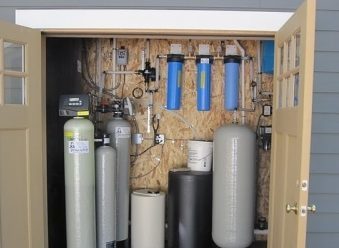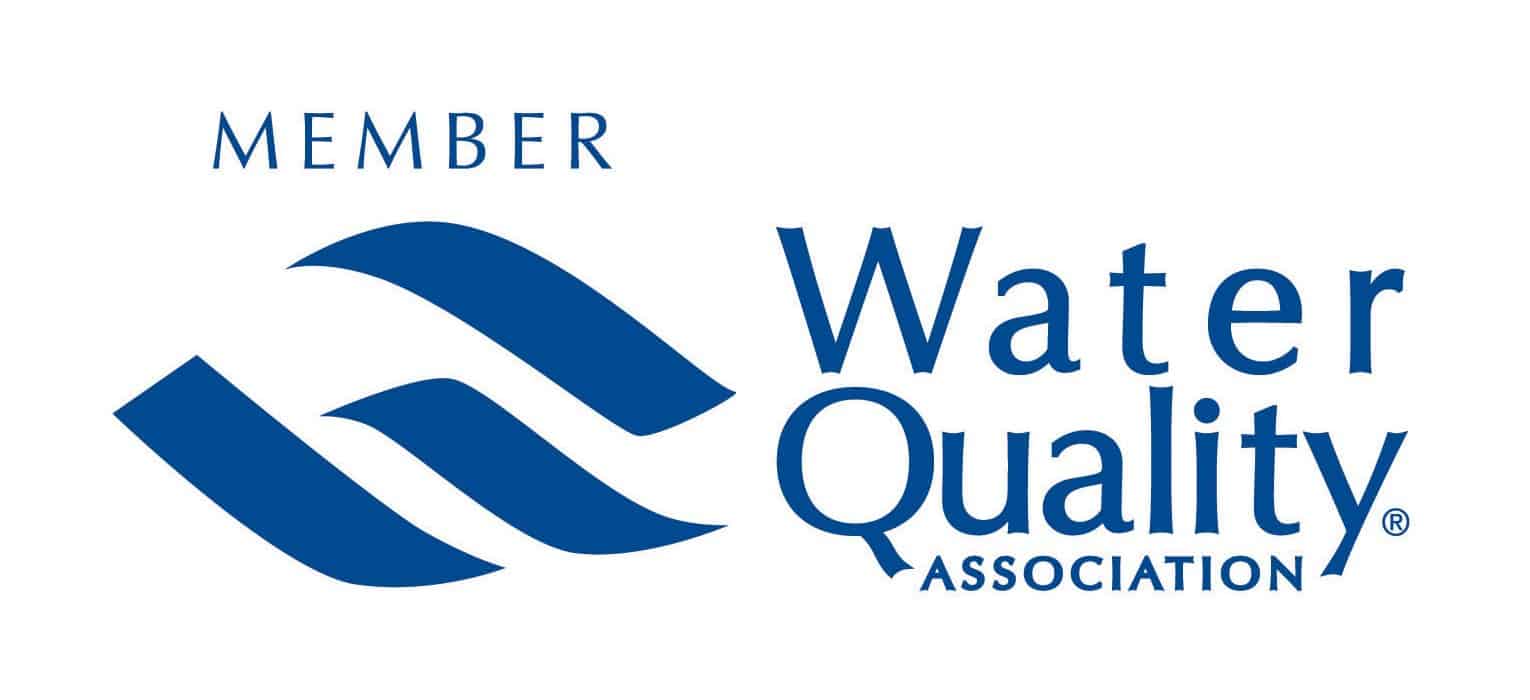An Introduction to Water Quality & Water Treatment
For the average person who has never owned a well before, water well filtration can feel like a very overwhelming topic. With so many different options and constant waves of new products it can be hard to know what you actually need and what is the best use of your hard earned money. This introduction will cover the common types of contaminants found in water wells, how they get into the water and the types of filtration required to address them.
Where Do Water Contaminants Come From?
Before we break down the different types of contaminants it is important to understand where these contaminants are coming from. The water inside of your well comes from an underground aquifer. An aquifer is often described inaccurately as an underground river but that isn’t really the case. Aquifers are actually layers of permeable rock that the water can freely move through. The water gets into these aquifers through a handful of different ways but it is safe to say at one point it was all surface water.
In an ideal world, as groundwater moves through the rocks in the ground, the earth filters contaminants that would be found at the surface, such as bacteria. In reality, some contaminants can’t be filtered by the earth, such as gasoline, pesticides, etc. Luckily, these contaminants are very rare in groundwater systems of the Pacific Northwest where you’re likely to get your water from. If after testing your water you do find surface contaminants – coliform bacteria is most commonly tested for – then that’s a sign that the well system is not effectively sealed against contaminants found above ground. This can be a result of the construction of the well, damage to the water system, or a contamination source located too close to the well itself.
Groundwater also enters the earth in a relatively pure state – rain water is fairly clean and free of contaminants, and is low on the pH scale, meaning that it is an acid. As the water moves through the sand, gravel, and rock aquifers, the acidic nature of the water begins to dissolve material found in the aquifers. These materials are most often iron, magnesium, calcium, sodium, and to a lesser extent, other heavy metals, such as manganese or arsenic.
Testing for Contamination
While surface contaminants could be specified as anything from above ground that you don’t want in your drinking water, there are a handful of bacteria that are tested for in order to determine if surface water is getting into the well. These bacteria are: coliform bacteria, e-coli bacteria and fecal bacteria. E-coli and fecal bacteria are harmful in and of themselves and show that animals are getting into the water. Coliform bacteria is not necessarily harmful by itself, but is only found on the surface. If there is coliform in your water it means that surface water is getting into your well or the place the sample is taken has some sort of issue. Follow up testing and inspection should be carefully conducted to find the potential problem(s) and fix them.
Additional laboratory testing or on site testing can be conducted to find out how many and how much of other contaminants are present in the water source. Iron and hardness, a measure of calcium and magnesium, are very common in the pacific northwest. Arsenic is also hit or miss in many water wells through King County, Pierce County, Snohomish County, and other areas around Puget Sound.
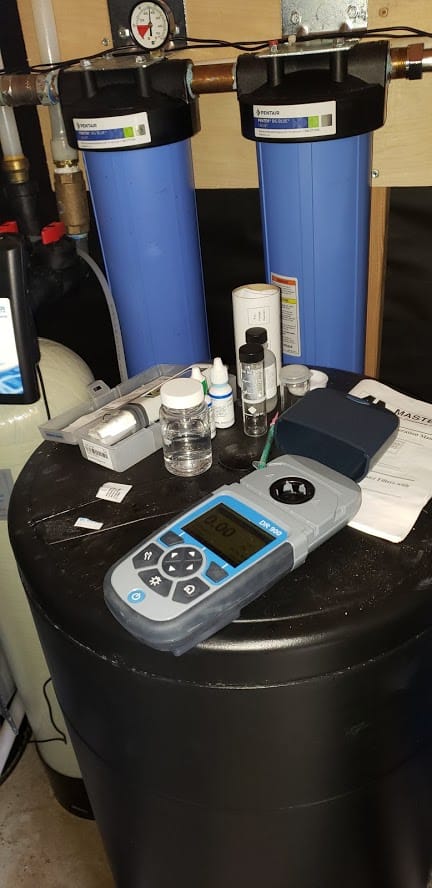
Treatment Options for Surface Contamination
There are only two ways for the average homeowner to treat surface contaminated water. The first and typically best option is to fix whatever issue is allowing surface water to leak into the well or allowing your system to harbor bacteria. This can be as simple as replacing a cracked well cap or leaky pipe, or as complicated as drilling a new well. Typically it is a relatively simple fix, as newer wells that are constructed properly are not going to fail in such a way that requires the well to be decommissioned and replaced.
Water Purification Systems
There are a few different methods of purifying water from contaminated sources. UV is often used as it is the simplest and relatively easiest methodology for purification, but chemical injection can also be used to add chlorine or peroxide to the water to kill harmful bacteria.
There are a few steps required for any purification system to work:
1. Filter/condition the water to remove all other contaminants
2. Install purification method
3. Allow for contact time, if necessary
4. Remove purification chemical, if necessary.
We typically will recommend a UV Water Purification system for removal of bacteria other living organisms. They often only require the completion of Steps #1 and #2 above, greatly simplifying the installation. UV filtration takes filtered water and passes it past a UV light before it goes into your house’s plumbing. The UV will destroy the DNA in the bacteria and other organisms, preventing them from reproducing and being a problem. UV Water Purification, when properly installed by professionals, are very reliable and much cheaper than drilling a new well.
While hand-dug wells are becoming less common in the Puget Sound or Seattle area, if you purchase an older house there’s still a possibility it is on a dug well, or has one on the property. Due to the construction of dug wells and how old most of them are, dug wells are innately much more susceptible to surface contamination. This means that whether bacteria is detected or not most professionals will recommend you put a UV system on any hand-dug well or abandon it if possible. JKA Well Drilling & Pumps recommends that all dug wells have a UV Purification system installed to reduce the chance of harmful bacteria making it into the home.
A second solution is to inject chlorine or hydrogen peroxide at a variable rate, pass through a contact tank to allow the chemical to mix in the water and kill all potential pathogens, and then if desired, filter out the chemical prior to entering the home. These systems are highly sensitive to changes in groundwater chemistry and are maintenance intensive, which is why they are not typically recommended.
Shock Treatment with Chlorine
You often find people advertising or recommending well chlorination for surface bacteria in your well. This is not a permanent solution! It is like cleaning a wound and not covering it. As soon as the chlorine is flushed out of the system any bacteria that gets reintroduced will reproduce and it is possible that other things like animals will come in the same way the bacteria did. The main purpose of chlorination is to kill any bacteria in the well and should be done after any work in the well is done or after any possible intrusion points have been properly sealed.
Other Surface Contaminants
If it’s found that pesticides, petroleum products, or other chemicals are getting into your well from the surface, it is likely that the well should be immediately decommissioned to prevent further migration of contaminants into the aquifer.
Subsurface contaminants
Subsurface contaminants unlike surface contaminants come from the minerals in the aquifer and have many more treatment options then surface contaminants. In the Western Washington the most common subsurface contaminants you will come across are as follows: iron, hardness, arsenic, and unbalanced pH. Some of the less common contaminants, though still present to are: sulfur, sodium, manganese and nitrates.
Hardness
Hardness is one of the more common water quality issues in Western Washington and is sometimes confused with iron in the water. While the two can sometimes taste similar they are very different compounds and often required very different treatment. What we call hardness is actually a calcium and magnesium compound in the water.
Hardness is most often characterized by the white scale at fixtures, in showers, and water spots on cars. It also affects how soap works and can require the use of excessive amounts of soaps and detergents to clean. Additionally, the scaling affect is exasperated by hot water, so water heaters and boilers are susceptible to damage by hard water. While typically not harmful it can cause scaling and staining on your appliances and at higher levels can ruin them by causing mineral build-ups in their internal tubing.
The primary treatment for hard water is an automatic backwashing water softener installed before the main Plumbing at the house. These water softeners use sodium ions in trade for hardness ions present in the water. With this in mind people often assume that their water will be salty after installing a softener and this isn’t necessarily true. While a small amount of salt is added to the system it is typically completely unnoticeable and is at such a low level that there wouldn’t be any negative health effects.
Manganese
Manganese is difficult to test for in the field, but is often hard to mistake when found. Manganese leaves black to brown stains and causes a swamp like odor in the water. A cost effective laboratory test can be used to verify the presence of manganese.
Removal of manganese can be accomplished with Greensand+ filtration systems, chlorination systems, and often with simple water softeners.
Iron
Iron is the most plentiful element on earth and through the natural hydrologic process, acidic rain water will dissolve the iron from the rocks and other materials in our groundwater aquifers. Nuisance levels of iron show up as red, orange, or yellow staining on fixtures, clothing, and even hair, yellow to orange colored water, and a distinct copper or mineral flavor to the water.
Before you can filter out iron you need to know that there are two different types of iron in your water: ferric, and ferrous.
Ferric iron is visible in the water; it will cause your water to be orange or brown. Of the two, ferric iron is the easiest to remove with backwashing filters, and at lower levels can be removed by cartridge filters. At the higher levels however you will need to have a dedicated backwashing iron filter in order to do the job properly.
Ferrous iron is not oxidized. Therefore, ferric iron is not visible in the water when it’s running. If your water is clear, but you still have a mineral taste to the water and get yellow staining, it’s likely you have Ferrous Iron in the water. People often confuse ferrous iron for hardness or vice versa. To treat ferrous iron there are a couple of different options. In smaller amounts it can be taken out with a water softener but at higher levels you will need to install a backwashing filter with either ozone to help oxidize the iron out. At the highest levels, chlorine injection system becomes necessary to help oxidize and then filter the iron out.
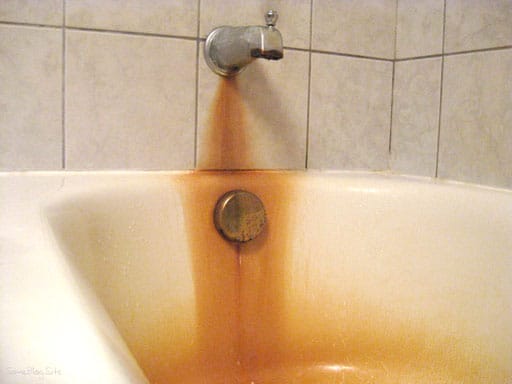
Arsenic – An Invisible Killer
Arsenic is tasteless, odorless, and totally undetectable without sophisticated testing methods. Non-cancerous effects can include thickening and discoloration of the skin, stomach pain, nausea, vomiting; diarrhea; numbness in hands and feet; partial paralysis; and blindness. Arsenic has been linked to cancer of the bladder, lungs, skin, kidney, nasal passages, liver, and prostate.
Arsenic is a naturally occurring contaminant in Western Washington. In fact, Arsenic was once mined for pesticides and other uses near Granite Falls, Verlot, and Silverton, amongst other mountain towns in the Seattle area. Arsenic occurs in two different forms in groundwater, Arsenic+3 and Arsenic+5, and can sometimes be in all one form or the other, or more often, a mixture of the two forms.
Because arsenic is often in two different forms, and one form is very difficult to get a hold of, Arsenic filtration systems are probably among the most complicated systems to engineer and install. The design for arsenic filtration often requires a Professional Engineer versed in their construction, and County Health Department approval for new construction projects. Any system with arsenic above 10 parts per billion (ppb) is required to have an arsenic filtration system which typically consists of pre and post filters as well as a main backwashing arsenic filter.

pH
pH while technically not considered a contaminant refers to the acidity of the water in your well. High pH can lead to build up of minerals in your pipes, appliances and a bitter taste. Low pH can cause corrosion in your plumbing and fixtures. Low pH can be very simple to solve typically requiring a backwashing calcite filter or sodium carbonate injection system, but it can be a little bit harder to combat high pH. The best way to combat high pH is either use a chemical injection system to inject acids, or a backwashing ion exchange system, similar to a water softener, remove excess alkalinity.
Low pH is typically characterized by the damage it causes – blue green stains in sink drains are an indicator that your low pH water is stripping copper from the pipes in the house. High pH water typically leaves users feeling like they can’t get soap off – the water feels slippery.
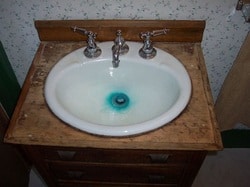

“Sulfur” – That Rotten Egg Odor
Sulfur as a contaminant is rare, but the odor of Hydrogen Sulfide gas isn’t. The rotten egg odor often found in well water is a result of harmless bacteria living underground. The bacteria eats minerals underground and reduces them into Hydrogen Sulfide gases, which then come out of solution when the water comes to atmospheric pressure at the faucet or in the shower.
Hydrogen Sulfide can be removed with activated carbon filters, or it can be oxidized out using ozone, storage tanks with spray nozzles, or chlorine injection.
